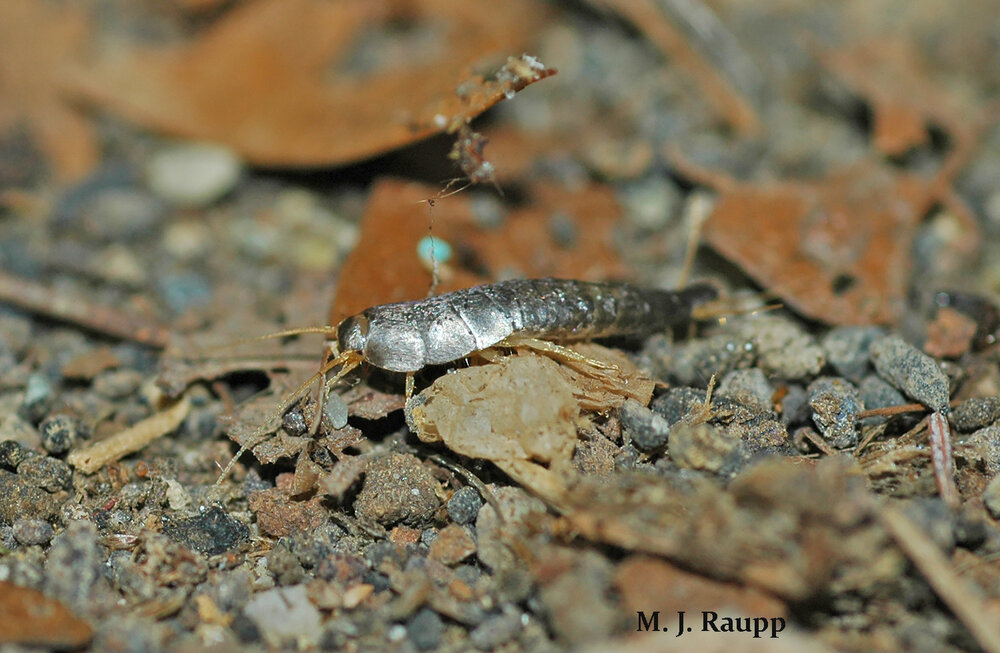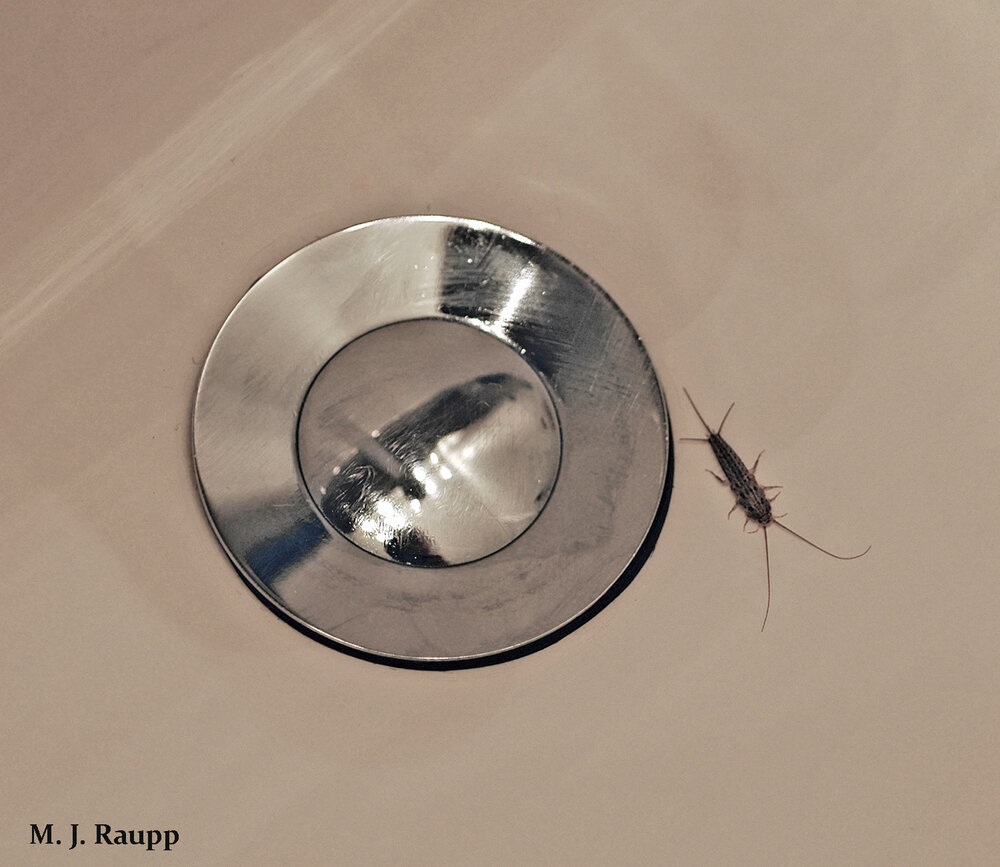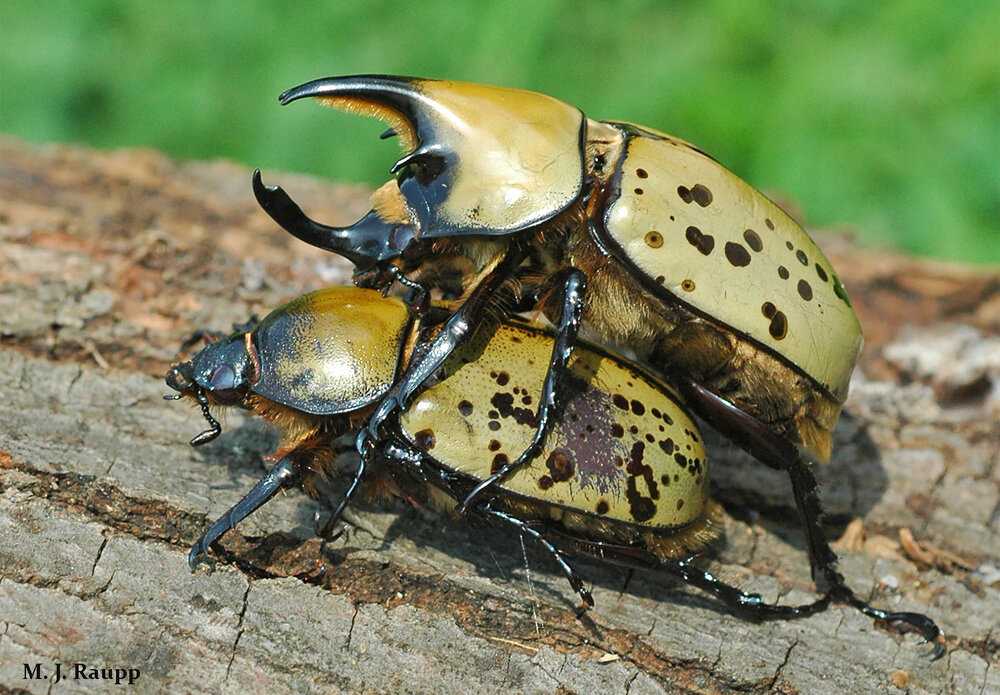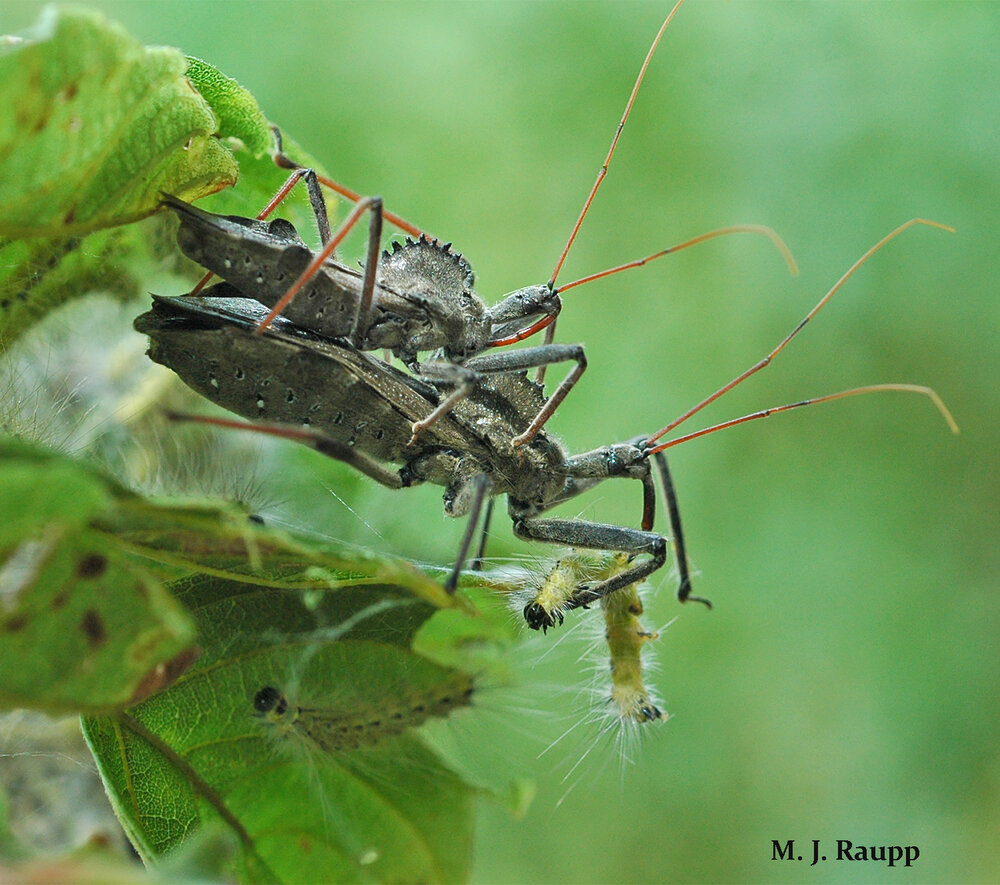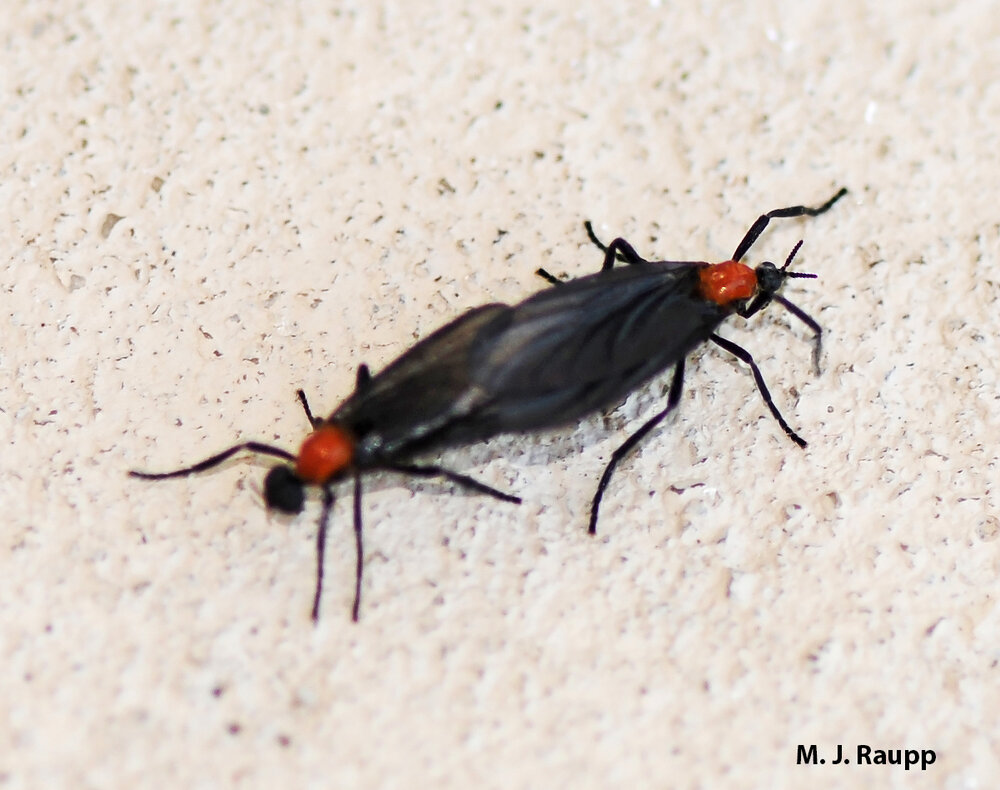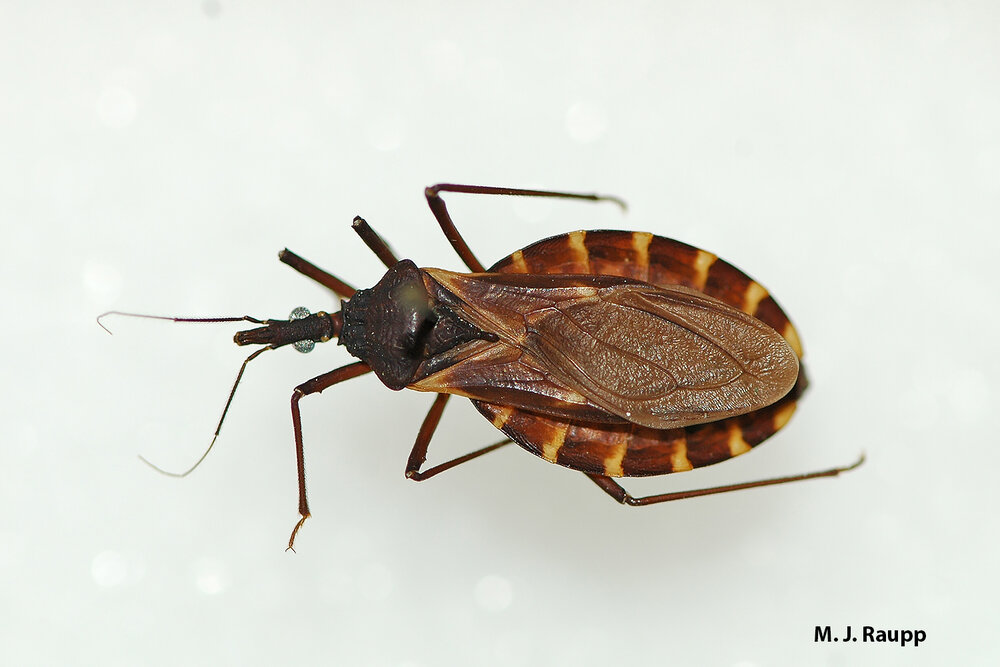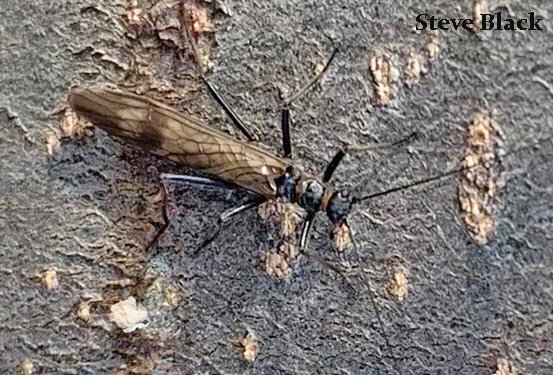Mitey troubles for house plants: Twospotted spider mite, Tetranychus urticae
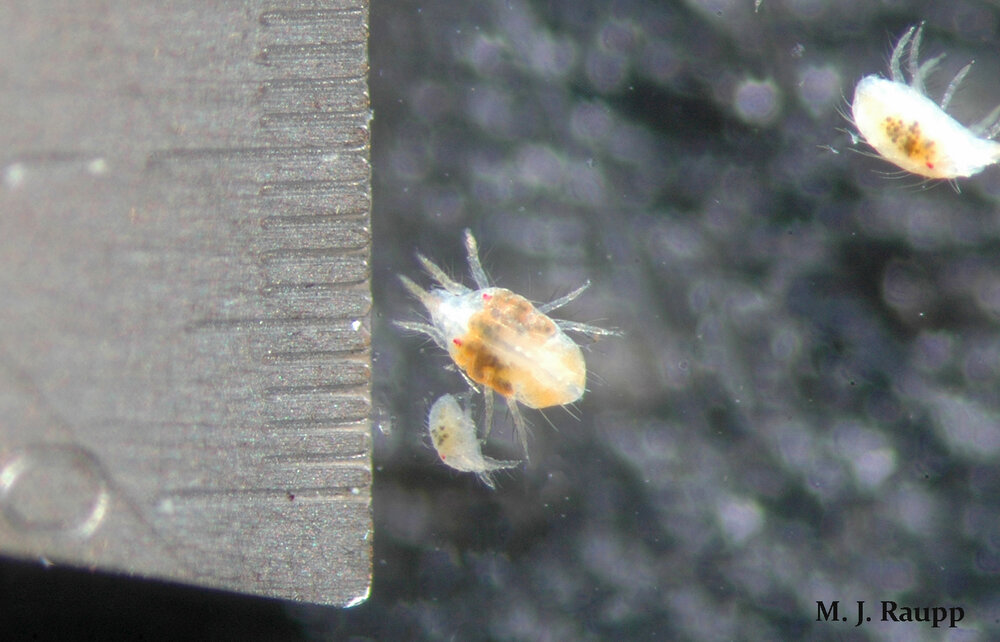
At only a fraction of a millimeter, twospotted spider mites still cause big problems for plants.
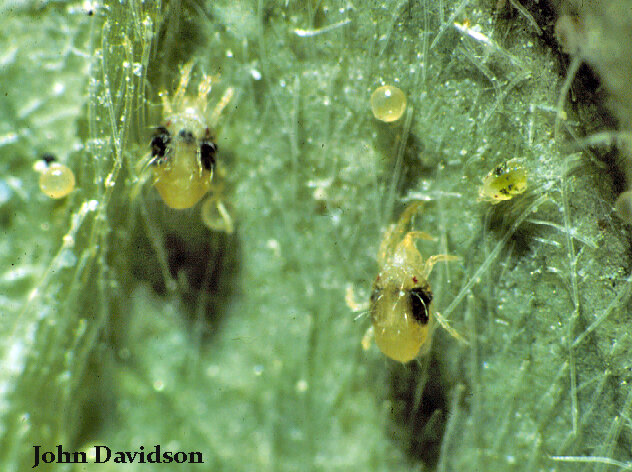
Two large dark patches on either side of body make it easy to see why they are called twospotted spider mites.
With ambient temperatures still hovering around the freezing mark, mischievous plant pests would seem months away. However, as days lengthen, the strong winter sun delivers much more energy to house plants, especially those placed near large picture windows with a southern exposure. For pests like spider mites, elevated temperatures can cut generation times by more than half. This and a few other factors we will learn in a moment contributed to a seemingly overnight explosion of spider mites on one hapless houseplant in my living room. Here’s part of the back story. When new plants arrive in a household, it’s always a good idea to give them a careful inspection just to see if they might be harboring uninvited guests. Keeping a watchful eye on new arrivals for a couple of weeks is also a good idea just to see how they are doing and observe any hitchhikers that may have accompanied them from the plant shop. Having failed to follow these ounce-of-prevention rules, a new arrival to our home recently blossomed into a spectacular outbreak of twospotted spider mites.
Mites are not insects. They belong to a related clan of arthropods, a subdivision of Arachnids called Acari. Unlike insects that have three body regions, spider mites have only two, a small region bearing the mouthparts and a large region bearing legs that comprise the rest of the body. The mite’s development starts with an egg that hatches into a 6-legged larva which molts into an 8-legged nymph. One more nymphal stage occurs before the mite sheds its skin and becomes an adult.
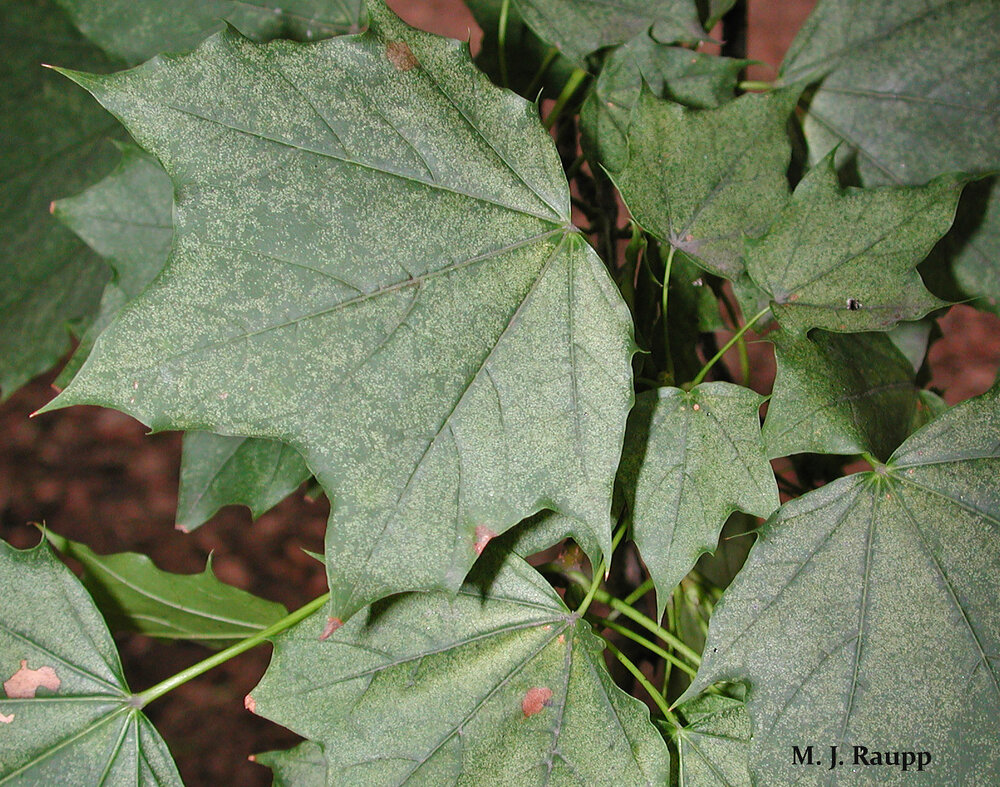
Thousands of spider mites puncture cells and remove green tissue from leaves creating a galaxy of white spots. This injury is called stippling.
Twospotted spider mites are infamous worldwide as a major pariah of vegetables grown in fields and greenhouses, large and small fruits, ornamental trees and shrubs, and herbaceous ornamental plants, including those growing in front of my picture window. These cosmopolitan rascals feed on more than 200 plant species worldwide. They injure plants by piercing cells with tiny needle-like stylets that rupture cell membranes. Nutritious cell contents are then sucked into the digestive tract of the mite. By removing the green photosynthetic contents of cells, tiny white spots accrue on the leaf surface, creating a type of injury called stippling. When spider mites are abundant and their feeding prolonged, leaves may turn white as thousands of stipples coalesce. Eventually leaves discolor and may turn yellow, bronze, or brown before dropping from the plant. Heavily infested plants often appear to have encountered a blowtorch.
One fascinating and unique attribute of spider mites is their ability to produce silk. Super strong silk fibers function as mite highways connecting one part of the plant to another. Silk also provides a protective refuge from predators and adverse climatic conditions and acts as a substrate for depositing eggs and communicating with other members of the species.
In the warmth of a sunny window, populations of twospotted spider mites explode. A cloak of fine silk spun by thousands of spider mites provides a highway for the tiny suckers to move from one branch to another. In addition to transport, silk provides a refuge from predators and the perfect place for spider mites to deposit translucent spherical eggs. Heavy infestations like this one are often best resolved by disposing of a plant before mites spread to others.
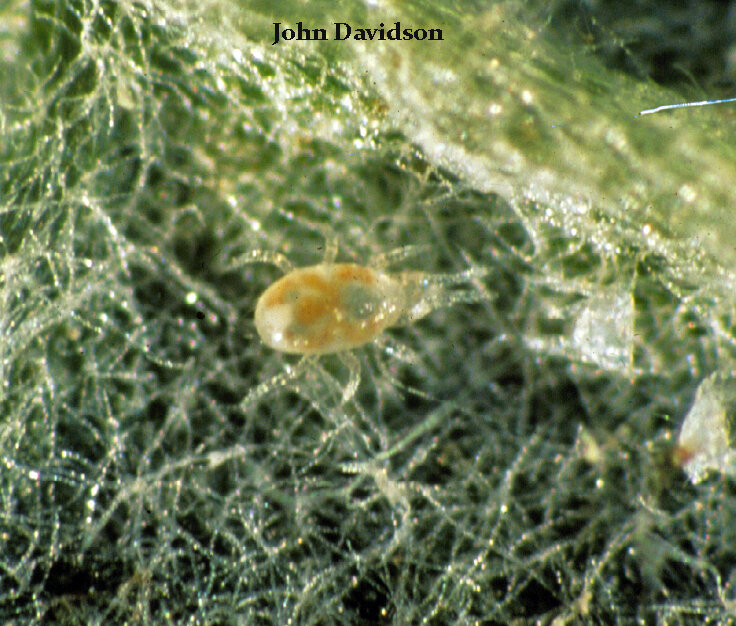
Like secret agents in Spy vs Spy, in the intriguing world of mites, predatory phytoseid mites conduct search, find, and consume missions aimed at some of their favorite meals – eggs, nymphs, and adult spider mites. Image: John Davidson
Under natural conditions outdoors, twospotted spider mites are beset by attacks of predatory ladybeetles, lethal minute pirate bugs (arrrggghhh!), maniacal lacewing larvae, and predatory mites, among other beneficial insects. Unfortunately, these heroes are conspicuously absent from my living room. With thousands of spider mites already sucking the life from my plant, legions of mite eggs ready to hatch, generation times growing ever shorter in the strong winter sun, and a dozen uninfested house plants cowering nearby, the hapless house plant has now joined the remnants of last season’s vegetables in the compost pile. In a final act of contrition, plant and pests will fuel generations of microbes and decomposers like pillbugs and soldier flies we met in previous episodes in an ongoing circle of life.
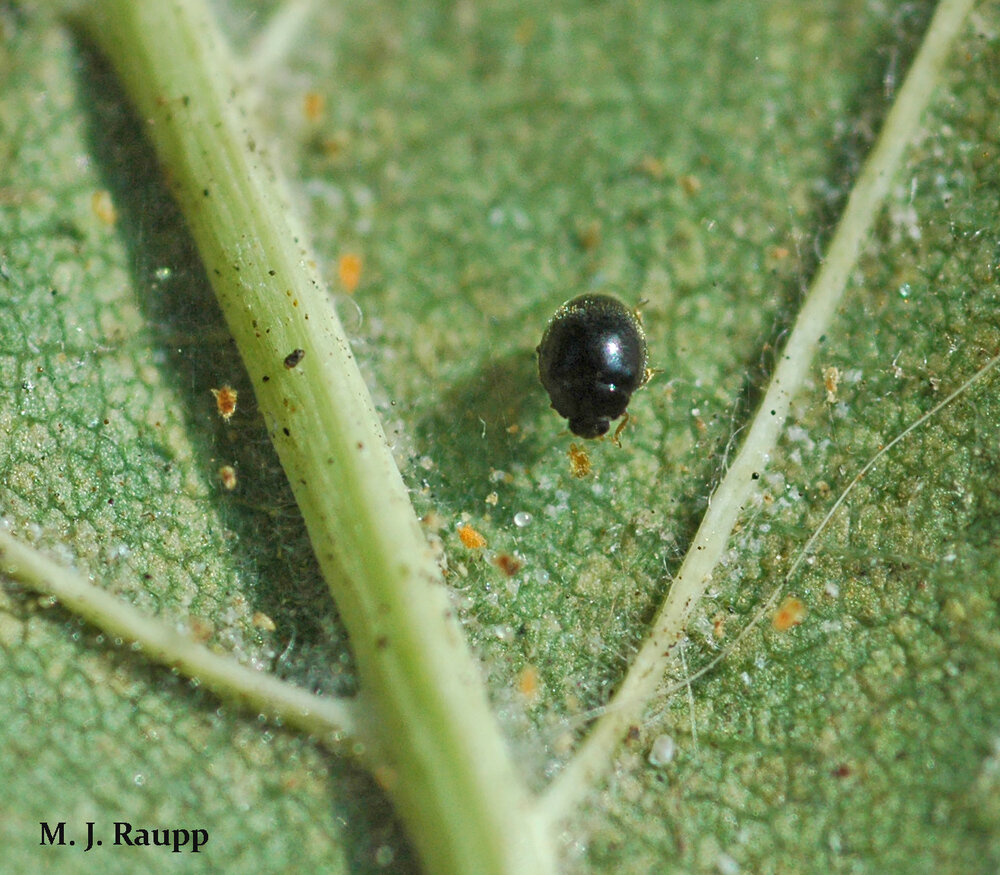
Tiny lady beetles known as spider mite destroyers help reduce populations of spider mites in the wild.
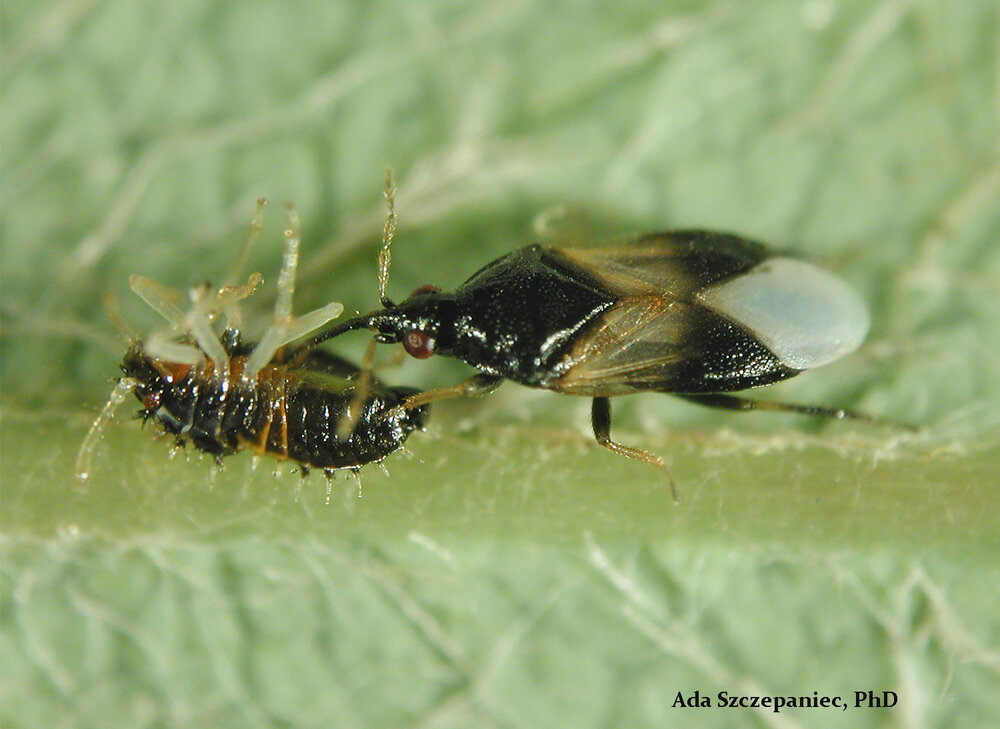
Aye matey, minute pirate bugs suck the life from many small pests including lace bugs and spider mites. Image: Ada Szczepaniec
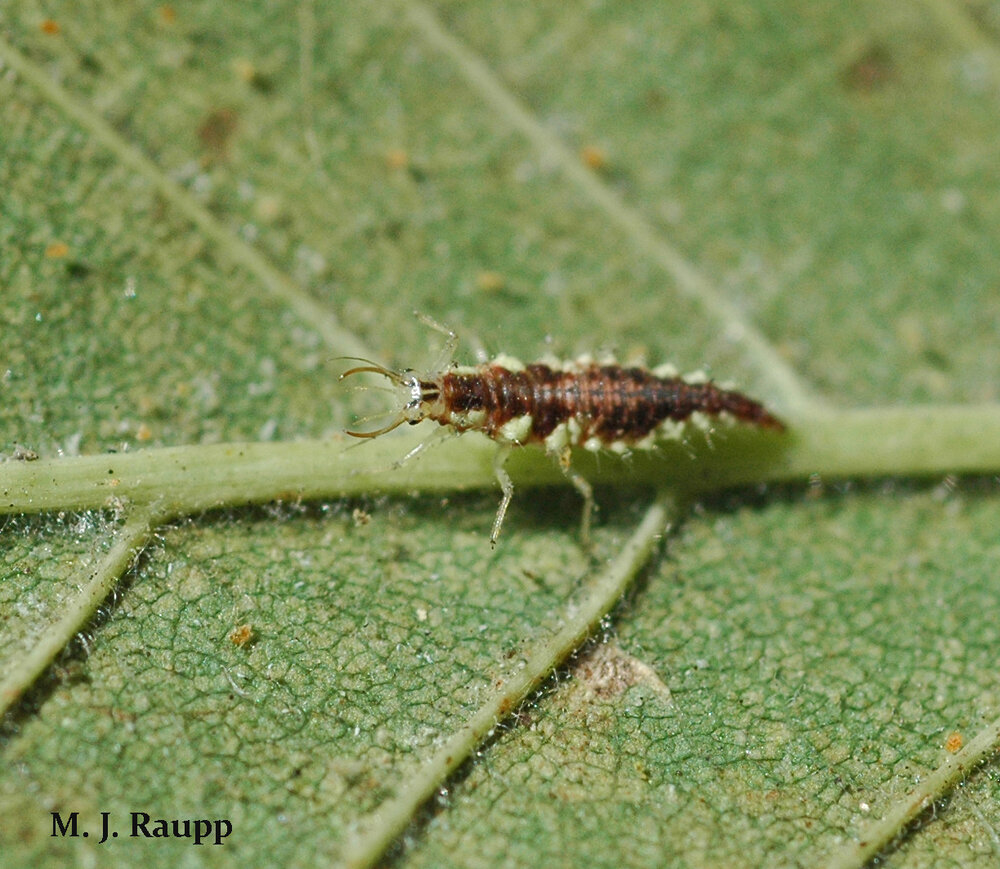
Assisting spider mite destroyers are alligator-like lacewing larvae.
Acknowledgements
Fascinating articles including “The silk of gorse spider mite Tetranychus lintearius represents a novel natural source of nanoparticles and biomaterials by Antonio Abel Lozano-Pérez, Ana Pagán, Vladimir Zhurov, Stephen D. Hudson, Jeffrey L. Hutter, Valerio Pruneri, Ignacio Pérez-Moreno, Vojislava Grbic’, José Luis Cenis, Miodrag Grbic’ & Salvador Aznar-Cervantes”, and “ Featured Creatures, Common name: twospotted spider mite scientific name: Tetranychus urticae Koch (Arachnida: Acari: Tetranychidae)” by Thomas R. Fasulo and H.A. Denmark were consulted in preparation of the episode. Learn more about twospotted spider mites at this link: http://entnemdept.ufl.edu/creatures/orn/twospotted_mite.htm
This post appeared first on Bug of the Week
